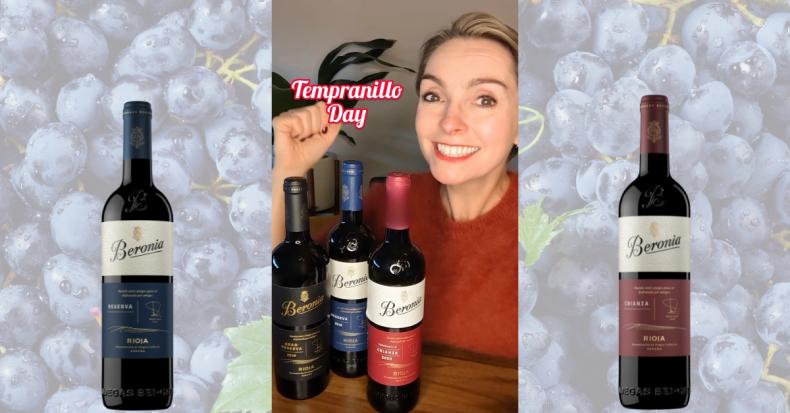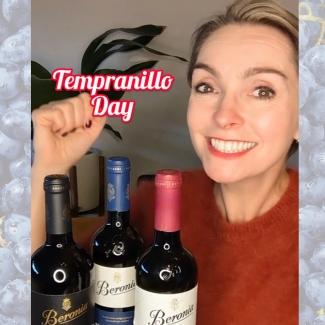A Quick Guide to Tempranillo from Rioja
If I could be a wine, I would want to be Tempranillo. Why? Because as wine grapes go, it's the equivalent of that popular, good-looking person in your sixth form who easily got into Oxford while also being a brilliant sportsman, performer and all-round fabulous human. It’s little wonder that it has its own celebration day (International Tempranillo Day is November 9th), so when better than now to take a deep dive into some key styles of this much-loved Spanish grape?
What does classic Tempranillo taste like?
This model student of a grape translates into the wine glass as ripe strawberry, cherry and black fruit flavours with earthy, herbaceous notes and a touch of liquorice spice. On the palate, it’s medium to full-bodied and offers effortless structure with its velvety tannins and refreshing, but not too astringent, acidity. If that wasn’t annoying enough (in a good way), it’s a grape that ages elegantly and sings when it gets the chance to rest in oak for a while. The most famous place in the world for growing Tempranillo is unarguably the region of Rioja in north, central Spain. Here’s an overview of the styles you find there:
Tempranillo styles in Rioja
Like many famous European wines, Rioja is named after the wine region rather than the key grape or grapes that go into it, which in this case of course, is Tempranillo, often with splashes of Garnacha, Graciano and Mazuelo. It's worth noting however that terroir is increasingly important in Rioja, where three key sub regions are noted for adding nuance to the final style of the wines. There are more and more fine wines from single vineyards too. Added to these terroir-based nuances are the famous age terms, which explain how long the wine has aged both in oak and in bottle. All in all, having a general understanding of the below will help you pick bottles that match your taste preferences.
Rioja Subregions
Rioja Alta: In the west, these wines often display a classic style, with great complexity and structure. They tend to be silky and elegant thanks to the high altitude and cool climate here combined with chalk and clay soils.
Rioja Alavesa: Rioja Alavesa in the north gives refreshing wines with cool minerality, thanks to the limestone-rich soils and the Cantabrian Mountain climate. They’re beautifully balanced, fruity and approachable with lots of cherry and strawberry flavours.
Rioja Oriental (formerly Rioja Baja): Towards the southeast with a warmer, Mediterranean climate and alluvial soils, Rioja Oriental wines tend to be rich and robust with notes of blackcurrant and tobacco.
Rioja Age Terms
Joven: Meaning ‘young’ in Spanish, these wines will either be unoaked or will see only a few months in oak before being sold. They are fresh and fruity, generally meant for early consumption.
Try: Beronia Tempranillo, £13.95 from Vinotopia
Key notes: Fresh cherry, white pepper, cinnamon.
Crianza: Crianza wines must be aged for at least one year in oak barrels and then one year in the bottle. They offer a balance of fruitiness with subtle oak flavours.
Try: Beronia Crianza, £13 from Sainsbury’s, Waitrose, Ocado Majestic and Amazon.
Also available in half bottles and small bottles.
Key notes: Morello cherry, blueberry, thyme.
Reserva: Red Reserva wines undergo more extended ageing, so at least one year in oak barrels and two years in the bottle. The result is greater complexity, more noticeable oak and mature, spiced, baked fruit flavours.
Try: Beronia Reserva, £16 from Sainsbury’s, Waitrose, Ocado, Majestic and Amazon.
Key notes: Blackberry pie, milk chocolate, black pepper.
Gran Reserva: The Grandaddy of red Rioja styles, Gran Reserva represents the highest level of both ageing and quality. These reds see at least two years in oak barrels and three years in the bottle before release, but in practice, they often have more. These wines will be more savoury with leathery, vanilla spice notes.
Try: Beronia Gran Reserva, £24 from Majestic and Ocado.
Key notes: Black cherry compote, cedar, tobacco.
What to eat with Tempranillo?
Tempranillo is a versatile, food-friendly wine, which pairs well with all sorts of dishes from spicy grilled meat to creamy potatoes, hard cheese and pasta. It’s an ideal wine for Autumn as we crave dishes such as pork tenderloin, roast lamb and moussaka. Beronia Gran Reserva can even take some chocolate, like in this recipe for Churros.
Want to see some food pairing ideas? Check out Recipes.
Want to know more about the Beronia ageing style? See this post here.
Helena Nicklin is an award-winning drinks writer and broadcaster. Find her on social media @HelenaSips.




